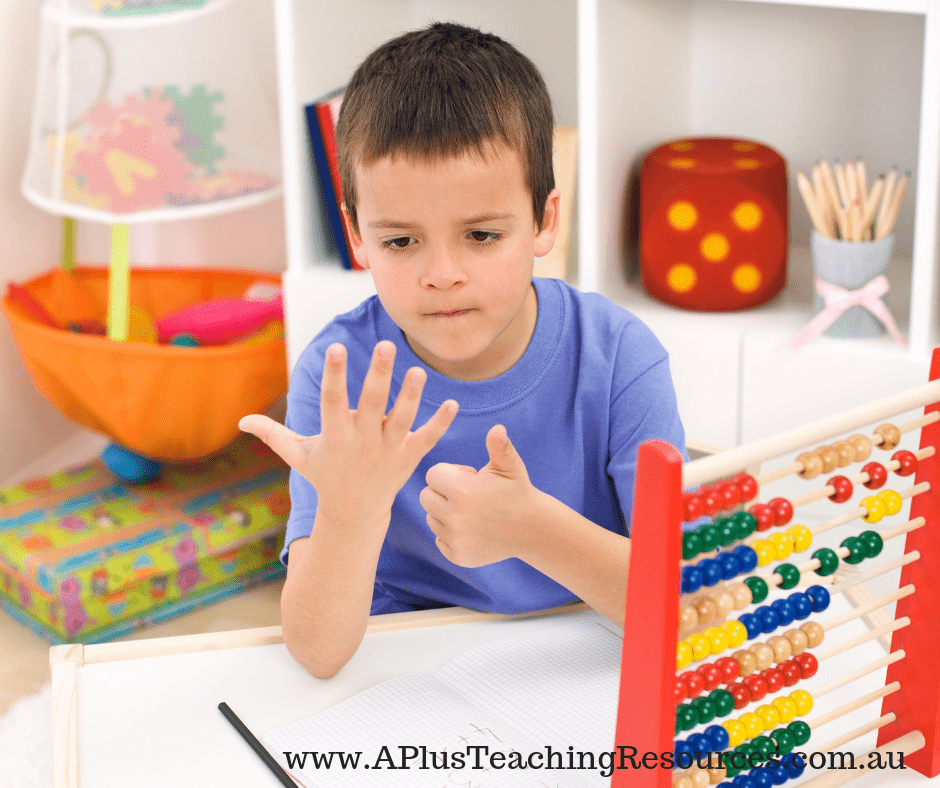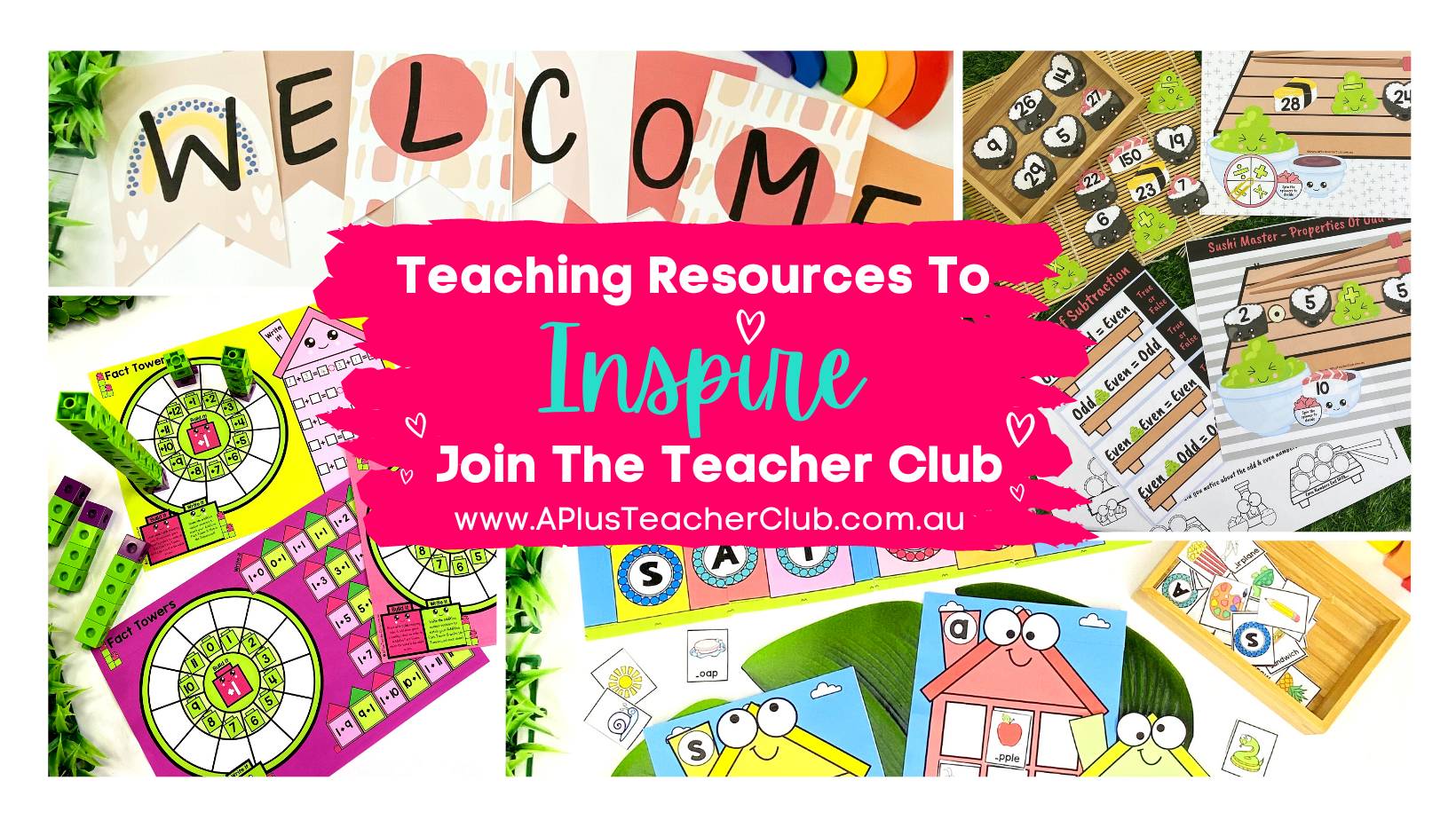Our tried & tested number of the day activities for Teaching Number Sense will make your students confident, fearless and flexible with numbers. Use them in your math class everyday!

What is Number Sense?
Teaching Number Sense is a key part any maths program. Researchers have found that student achievement levels in numeracy are directly linked to their number sense.
The term Number Sense refers to a student’s “fluidity and flexibility with numbers,” (Gersten & Chard, 2001).
*This post contains Affiliate Links. This does not affect your buying experience but A Plus Teaching resources will receive a small commission for referring your purchase.
Number Sense Research
Research shows that number sense is the foundation of a range of mathematical skills. Findings stress the importance of daily number sense activities to help students develop mathematically in:
- mental calculation (Hope & Sherrill, 1987; Trafton, 1992);
- computational estimation (for example; Bobis, 1991; Case & Sowder, 1990);
- judging the relative magnitude of numbers (Sowder, 1988);
- recognising part-whole relationships and place value concepts (Fischer, 1990; Ross, 1989) and;
- problem solving (Cobb et.al., 1991).
Dr. Jo Boaler describes the impact of number sense on learners :
The National Council of Teachers in 1989 identified the following five components that characterise number sense:
- Number meaning
- Number relationships
- Magnitude of Numbers
- Operations involving numbers and referents for number
- Referents for numbers and quantities
This research highlights that Number sense is an important part of teaching numeracy and needs to be part of daily math lessons.
Building Number Sense
Building Number sense is not something that can be done quickly, but it can be taught without too much stress. Simply include number sense activities and games every day as part of your math lessons.
Planning number sense should include explicit teaching, investigation and practice. Planning using the gradual release model “I do, We Do , You Do’ model is the perfect way to get excellent results for kids.

The most effective math programs don’t just include one type of activity. Kids need a range of activities that focus on building depth. They need activities that give them opportunities to:
- reason flexibly about numbers
- spot unreasonable answers
- understand how numbers can be taken apart or partitioned, and put together in different ways
- see connections
- figure things out mentally
These skills are important because they help students to lay the foundation for mental arithmetic as well as more advanced mathematical skills.
How do you teach number sense?
A large body of research has shown that number sense develops gradually, over time, as a result of exploration of numbers, visualising numbers in a variety of contexts, and relating to numbers in different ways.
Marilyn Burns suggests the following key, research-based teaching strategies to build numbers sense:
- Model different methods for computing
- Ask students regularly to calculate mentally
- Have class discussions about strategies for computing
- Make estimation an integral part of computing
- Question students about how they reason numerically
- Pose numerical problems that have more than one possible answer
Activities To Develop Number Sense
If you are wondering how to improve number sense it can be done very simply with a “Today’s Number” or “Number of The Day ” resource.
These are specifically created activities to improve number sense and have been specially created to provide opportunities for your students to build flexibility and fluency with numbers.
The number sense resources are open-ended so that you can quickly adapt them to meet individual student needs or they can be differentiated for guided math lessons and small group work.
They are perfect for warm-ups, math centers and early finishers.
Number of The Day Resources
Our 5 Number of the Day Activities pack includes 5 different activities that:
- promotes number sense,
- extends mathematical language and vocabulary
- builds fluency & flexibility with numbers
This activity pack includes:
- Number of The Day – 5 Spaces for 8 activities everyday of the School Week
- Number of The Day Think board
- Today’s Number – 21 Tasks & Thinkboard
- Wanted Number Poster
- Frayer Model Thinkboard – Definition, Characteristics, Examples, Non-Examples
Number of the Day
This think board includes a a weekly template for your students to practice flexibility with numbers every day. Tasks include write the selected number:
- In digits
- Word form
- Expanded form
- draw Base 10 representation
- the number before/after
- 10 more/ 10 less
Laminate & reuse this template for the whole Year!
Number of the Day Think Board
This number sense resource is a great template for group work. There are four sections on this template for a group to work together to complete. Includes:
- In digits
- Word form
- Expanded form
- Draw Base 10 representation
- The number before/after
- 10 more/ 10 less
Today’s Number
This activity can be played like a bingo game or done independently. It includes 21 number sense tasks for students to complete.
Wanted Number Poster
The ‘wanted’ poster is an open-ended activity that lets students show their knowledge of the relationships between numbers. It can be easily differentiated for any sized whole or decimal number.
Frayer Think Board
The Frayer Board Think board Template is a graphic organiser, designed by Dorothy Frayer and colleagues at the University of Wisconsin in 2001.
This resource allows your kids to show how deeply they understand a number. They are excellent for highlighting what they don’t know too.
Read more behind them on our Frayer Model Think Board post.
Products By A Plus Teaching Resources
Try These Think Board Problem Solving Strategies!
Try these motivating Hands-on Activities for teaching Multiplication & Repeated Addition
Number Recognition Activities 0-10 Using a Number Think Board & Concept Attainment
PSST! If you want to Save time and $$$ on Teaching Resources Join Our VIP Club! Get instant access
To ALL our PAID & FREE Resources Plus 20+ New Activities Every Week! Click The Image Below To Find Out More…


















[…] Teaching Number Sense […]
[…] Teaching Number Sense […]